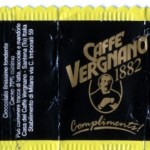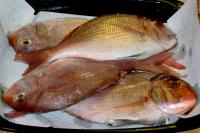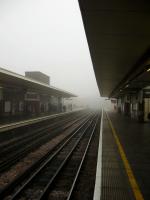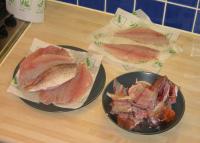Note: This entry has been restored from old archives.
Or: Our Friday trek into London to resupply in Chinatown and potter around Borough Market. Leading to our return home: well caffeinated, wok-enabled monkeys looking forward to an evening meal of dead cow’s leg.
On Friday we made a trip into London to grab some supplies from Chinatown and raid Borough Market. Chinatown in London seems rather small to me, I’m sure the area in Sydney with the “Chinatown” label is much larger. But maybe there are additional wings of London’s Chinatown we have not yet discovered. Our destination: the large and, reassuringly, slightly chaotic supermarkets. And now I have a wok! Wok! Wok! Wok! Such a great word. Thirteen cold hard inches of pressed steel. We also picked up supplies of various essentials such as miso paste, shoyu (aka soy sauce), mirin, rice vinegar, and wasabi (trying out a powdered version for the first time). Much of this is to fuel Kathlene’s sushi-making.
After our oriental shopping extravaganza we had good ristretto at Caffé Vergnano 1882 on nearby Charing Cross Road. We then had lunch consisting of some rather uninspiring Korean at a place on the other side of the road called Corean Chilli. They do not represent good value for money, I don’t recommend them. I increasingly find that I don’t want to bother with Oriental food in the UK (Asian here implies Indian); I’ve been spoilt by the Sydney standard and everything here in a normal price range is Sydney food-court-class.
Next Stop: Borough Market. This market is just around the corner from London Bridge tube station and is the best market I’ve seen, measuring by variety of produce. In contrast to the very single-purpose nature of Billingsgate and Smithfield markets, Borough Market is a true one-stop-shop destination. A retail rather than a wholesale experience. The various stalls stock all the fruit and vegetables you’d want; there are butchers with every normal cut of meat plus a wide variety of game meat; fish mongers with, uh, fish; many cheese/salami/olive sellers; and loads of options for lunches, snacks and sweets.
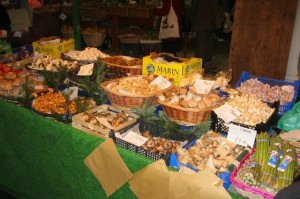
We first homed in on what I think of as the “mushroom place” (where I previously obtained key Mushroom Pasta ingredients). The “mushroom place” a fruit and vege stall located in the mouth of the northernmost alley off Stoney Street. We came away from here with bags of fresh shitake (for miso soup) and oyster (for a risotto) mushrooms. Next we picked up a wedge of absolutely beautiful Parmesan from the Parmesan Cheese Company stand, it is worth visiting their website to read all the interesting information about Parmesan (the people pictured on the site actually run the stall). On our way out we found ourselves drawn to the Farmer Sharp stand, mmmmm meeeaaaaat. Again, the dude on the website is the dude behind the counter. Reaching meaty gravity-well escape-velocity only cost us 1.5kg of osso bucco – dinner for the following couple of nights!
The last time we were at Borough Market we found unexpected good coffee at a small stall that seemed to have vanished. How distressing! It turned out to have just moved (we surmised) to a big permanent space across the street… however their website indicates that they’ve been in this location since 2001. We must have missed it last time and the new look of the fittings may just be a sign of very good cleaning! (Or maybe they were renovating?) It is Monmouth Coffee that I write of, in summary: damn fine espresso.

When we move into London-proper, an inevitable future, Borough and surrounds is high on the list of desirable locations. It is a satisfying picture: living near Borough Market with Billingsgate market and Chinatown only a couple of tube stops away and the whole of London city within what I call “walking distance” (but there’s always the tube). Picking up good produce from markets in the city costs no more than Tesco (major supermarket, like Coles), in many cases markets can cost a lot less (especially Billingsgate), and the quality is incomparable. We’ve stopped getting fruit and vege from Tesco already, since the little, local greengrocer (the greengrocer is quite large actually, but his shop is small) has better produce, better prices and less bloody plastic packaging. We tended to buy “organic” produce from Tesco and the problem Tesco have to solve is “How do our checkout dudes know an organic red onion from an in-organic red onion?” – the answer is to wrap organic red onions in plastic socks, with copper end-fasteners and polypropylene labels. Returning to the topic of price, even the coffee at Monmouth is cheaper than the local, far inferior, coffee options in Ricky. Unfortunately travelling between the city and Ricky costs more than 10 quid for both of us, so London doesn’t work out so well for groceries while we’re out here, certainly not for the sake of cost alone.
Maybe if we moved to somewhere around Borough we’d save a few quid on shopping… to make up for the fact that rent in London is nightmare-high. Scanning some adverts tells me that a place similar to what we’re in now in/around Borough would be at least twice the rent, something in the order of £2k to £2.5k per month. We can’t afford that until visas are sorted and we can both work properly, or I get a higher-paying London-city-job (damn those banks pay a lot, to make up for the jobs being insanely boring from what I hear). We do have more space than we need in our largish 2-br apartment and could easily downgrade to a one bedroom place and maybe, barely, a large loft or studio style place. No entertaining, no dinners for friends or huge pizza parties – when living a world away from close friends entertaining space isn’t required. Share-housing is always there as a cost-cutting route, but we don’t know anyone in London well enough to count share-housing as even a remote option (unless anyone we know thinking of moving here? ;).
Well, one can speculate on future plans endlessly. We’ll be in Ricky for the foreseeable future: for as long as current company engagements continue. Eventually things must draw to a close though, then it’ll be time to consider the options.
Briefly back to Borough Market, I have to mention: Brew Wharf. There is even excellent beer nearby! I tried a dark beer from Meantime and their own “Brew Wharf Best” last time we visited the market, they were both very good. What more could you ask for?







